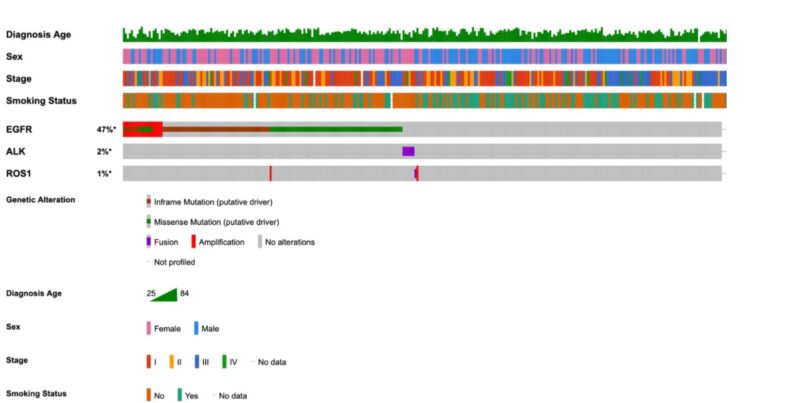In recent years, more and more research has shown that traditional cancer indices are not accurate and often lead to “false-positive” results. The medical community has started using new indicators that are more effective in tracking the effectiveness of cancer treatment.
Why are traditional cancer indices not accurate? An increase in the index does not necessarily indicate the presence of cancer
Different tumor markers correspond to different types of cancer surveillance. Some commonly known tumor markers include:
- Carcinoembryonic Antigen (CEA): Used for monitoring lung cancer, gastric cancer, colorectal cancer, ovarian cancer, breast cancer, etc.
- Alpha-fetoprotein (AFP): Used for monitoring liver cancer, testicular cancer, ovarian cancer, etc.
- Cancer Antigen 125 (CA 125): Used for monitoring ovarian cancer, prostate cancer, breast cancer, lung adenocarcinoma, etc.
Cancer indices reflect the concentration of proteins related to cancer cells. However, these proteins can also be produced in normal individuals due to various other body conditions, which can affect the cancer index. For example, an increase in CA 125 may be influenced by factors such as pregnancy, inflammation, or gynecological diseases, leading to an elevated index reading.
Therefore, an increase in the cancer index does not necessarily indicate the presence of cancer cells. It can also be influenced by the conditions of healthy cells. Conversely, a stable cancer index does not guarantee the absence of cancer cells. This greatly reduces the reference value of cancer indices.
How should the general public, cancer patients, and survivors interpret cancer indices?
Currently, many preventive cancer screening programs offered by healthcare centers include the examination of cancer indices. The concentration of tumor markers in blood or urine can be measured to determine the index level. While the general public may come across cancer index readings, not everyone understands how to interpret them correctly. Whether one has cancer or not, the interpretation of cancer indices should be left to the doctors, and individuals should not interpret them on their own. Here are some tips for correctly interpreting cancer indices:
The general public does not need to include all cancer indices as part of routine physical examinations to avoid unnecessary anxiety. For individuals with a high risk of developing cancer due to genetic factors, they can follow their doctor’s advice and regularly check specific cancer indices for reference. When a continuous increase in cancer indices is observed, further diagnostic evaluation should be conducted by a doctor.
For cancer patients, if relevant cancer indices show an increase before starting treatment, they can use the changes in the indices after treatment as a preliminary assessment of treatment effectiveness. However, if the relevant cancer indices do not show an increase before treatment, the changes in the indices after treatment need to be interpreted in conjunction with other relevant tests. For some cancer patients, their cancer indices may not increase before or after treatment, and in such cases, the significance of using cancer indices to evaluate treatment effectiveness is limited. Other examinations, in combination with the doctor’s evaluation, are necessary for treatment monitoring and assessment.
As for cancer survivors, if the relevant cancer indices show an increase after recovery, further evaluation by a doctor is needed to assess the possibility of recurrence. Relying solely on cancer index tests is not sufficient to determine recurrence. Cancer survivors should undergo additional imaging tests and rely on the doctor’s judgment to assess cancer recurrence.
Tracking Cancer with New Indicators? Genetic Testing for More Accurate Monitoring of Cancer Treatment
Due to the limitations of using traditional cancer markers, which often lead to false positive results and negative psychological impacts on patients, the medical field has begun to focus on new indicators that can effectively track the progress of cancer treatment. Since cancer is associated with genetic variations, a more precise monitoring of treatment outcomes can be achieved by tracking the relevant genetic variations before and after treatment.
Taking lung adenocarcinoma as an example, approximately 50% of patients with this type of cancer have genetic variations related to the EGFR gene, while ROS1 and ALK variations are also commonly found in lung adenocarcinoma. Tracking the relevant genetic variations of lung adenocarcinoma before and after treatment is currently a more effective method for assessing the efficacy of cancer treatment.

The graph above shows that 50% of lung adenocarcinoma patients have EGFR, ROS1, or ALK gene variations. (Source: Nature Genetics volume 52, pages 177-186, 2020)
- *The content of this article is provided by Codex Genetics and is for reference only. It does not represent the position of Bowtie. Bowtie does not assume any responsibility for any loss or damage caused to anyone due to the use or misuse of any information or content, or reliance on it.






